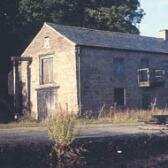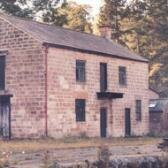Cromford Village
Region: East Midlands
Owner Type: Unknown
Funding Body: HERS; CAPS; HLF; EH
Year of Intervention: 1995 - 2002
Summary: Cromford- cradle of the industrial revolution- revealing the detail and creating a visitor attraction for this World Heritage Site.
Description: The village of Cromford in Derbyshire is steeped in industrial history and often called the cradle of the industrial revolution. Before 1770, Cromford was little more than a cluster of cottages around an old packhorse bridge and a chapel. However, in 1771, the inventor Richard Arkwright began to build the world’s first successful water-powered cotton spinning mill in Cromford, which soon became so successful that he was able to build other mills including Haarlem Mill and Mason Mill. Cromford is part of the Derwent Valley Mills World Heritage Site, which was designated in December 2001.
Issue: Prior to English Heritage in Cromford the village suffered from neglect, unsympathetic alterations to the built heritage, and environmental problems resulting from the amount and nature of traffic using The Hill and the A6. The principal issue was structural damage caused by the vibration of heavy traffic, which impaired pedestrian movement and produced high levels of noise and dust.
Strategy: Restoration of the old mill complex and canal wharf is being carried out by the Arkwright Society, which purchased the site in 1979. Most of the smaller modern-day buildings have been demolished and the huge task of cleaning walls and floors, heavily contaminated with chemicals and paint from the site’s more recent uses, is well underway. Asuccessful CAPS scheme was implemented in Cromford proir to the designation as a World Heritage Site. Cromford CAPS 1 operated for the period 1995-1998, with HLF funding offered in 1997. CAPS 2 followed in 1998-2001. The World Heritage Site designation was, however, instrumental in the continuation of the programme and in 2001 English Heritage invited the partnership authorities with Conservation Areas in the World Heritage Site bid for a successor grant scheme following the end of the CAP schemes. A Derwent Valley HERS was nominally started in April 2001, which included Cromford Conservation Area
Outcome: Heritage funding for this scheme totalled £245,651 and was supplemented by a further £311,686 of partnership funding. The impact of the CAPS and HERS in Cromford has been significant. The repair and reinstatement of lost detail on the 1770s Arckright houses used to house the mill workers, has attracted many home owners to come forward and do the same. There have been improvements to 55 buildings and a culture of authentic restoration has been created within the village, strengthened by the recognition of the cultural significance of the settlement as an important component of the World Heritage Site. Environmental enhancement projects to the Market Place (HLF funded), Willersley Castle Grounds and Cromford Wharf have significantly improved the public realm of the village. The mill is open every day and attract visitors from all over the world. It has a visitors’ centre, shops and a café and there are plans to create a major exhibition with working machinery, meeting rooms for schools and other educational groups, a library and a study centre.
Keywords: Designation, Funding, Repair, Reconstruction & Restoration
© English Heritage


